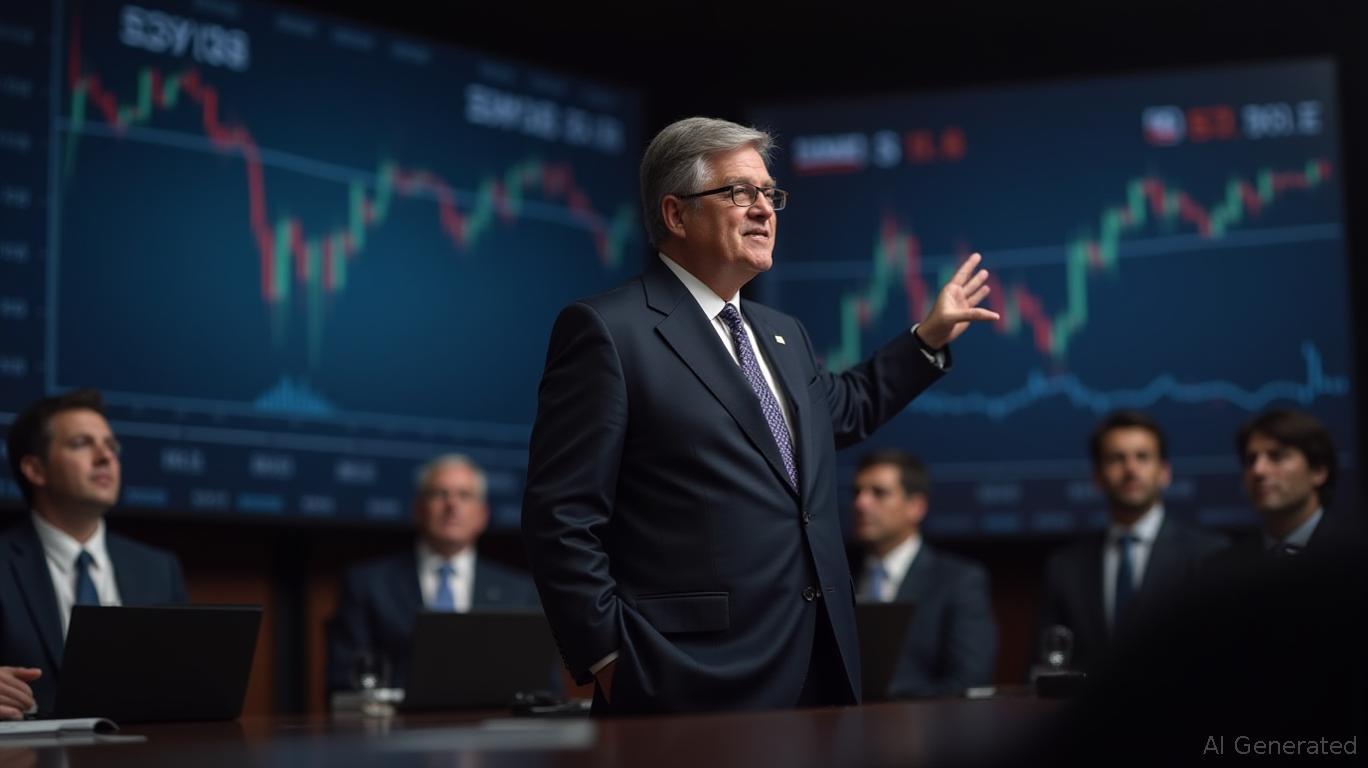BNB News Update: BNB's Token Burn Approach Fuels Worldwide Acceptance as Countries Adopt BNB for Central Bank Digital Currencies and National Reserves
- BNB Foundation executed its 33rd quarterly burn, destroying $1.208 billion in BNB to reduce supply and boost token value. - Kyrgyzstan launched a BNB Chain-based stablecoin (KGST) and CBDC, with Binance's CZ Zhao meeting President Zhaparov to advance adoption. - x402 protocol's BNB Chain expansion drove $810M market cap growth via gasless payments, while BNB surged 2.8% amid U.S.-China trade optimism. - Institutional adoption accelerated as Bhutan and Pakistan announced BNB-backed reserves, positioning t
BNB Foundation Finishes 33rd Quarterly
Binance’s native cryptocurrency, BNB, is further cementing its significance in the global digital asset landscape as the BNB Foundation completed its 33rd scheduled token burn, removing $1.208 billion in BNB from circulation. This initiative, which is part of Binance’s ongoing efforts to decrease token supply and boost value, coincides with the BNB Chain’s growing impact and recent ecosystem progress.

Kyrgyzstan has become a significant adopter of BNB Chain technology, unveiling a national stablecoin tied to the Kyrgyzstani Som, as shared by Binance co-founder Changpeng "CZ" Zhao, referencing
The BNB Chain ecosystem experienced heightened activity following the integration of the x402 protocol, originally designed by Coinbase. The x402b update brought EIP-3009 gasless transactions and verifiable receipts, pushing the protocol’s market capitalization above $810 million in just one day, according to
At the same time, BNB’s price has shown renewed strength. Trading at $1,155.15, the token has climbed 2.8% over the past day, rebounding from a recent dip, as reported by
BNB Chain’s advances in both geopolitics and technology are part of a broader wave of institutional adoption. In Bhutan, a special administrative region revealed plans for a multi-asset crypto reserve that includes BNB, while Pakistan named CZ as a strategic advisor to its National Crypto Council—moves that reinforce BNB’s appeal for both government and corporate holdings.
With BNB Chain drawing more institutional collaborations and technological upgrades, the token’s influence in global finance is on the rise. As more integrations and favorable economic trends emerge, BNB appears poised to play a crucial role in the next era of cryptocurrency adoption.
Disclaimer: The content of this article solely reflects the author's opinion and does not represent the platform in any capacity. This article is not intended to serve as a reference for making investment decisions.
You may also like
Bitcoin Updates: Fed’s Softer Stance Supports Both Economic Expansion and Inflation—Positive Momentum for Crypto
- The U.S. Federal Reserve cut rates by 25 bps to 3.75%-4.00% on October 29, 2025, ending quantitative tightening by December 1, easing liquidity constraints. - Crypto markets initially dipped post-announcement but gained analyst support as lower rates and weaker dollar historically boost Bitcoin and Ethereum as hedges. - Institutional crypto demand remained strong with Coinbase reporting 2,772 BTC inflows and Bitcoin ETFs seeing net inflows, while Tether's USDT supply surpassed $183 billion. - The Fed's "

Bitcoin News Update: Bitcoin Rally Drives $2.8B in Gains While Strategy's Shares Drop 15% Year-to-Date
- Strategy Inc. (MSTR) reported $2.8B Q3 2025 net income from Bitcoin's $70.6B portfolio (640,808 BTC) amid $20B unrealized gains. - New fair value accounting rules enabled profit recognition without selling Bitcoin, reversing $340M 2024 losses and boosting operating income to $3.9B. - CEO Phong Le targets $34B operating income if Bitcoin hits $150K, while $20B 2025 capital raises expanded holdings by 40,000 BTC. - Despite 51.74% BTC gains, shares fell 15.15% YTD due to dilution concerns, contrasting with

MEV's Tendency to Centralize Poses a Challenge to the Fundamental Principles of DeFi
- MEV (Maximal Extractable Value) destabilizes DeFi markets by enabling miners/validators to reorder transactions for profit, imposing a "hidden tax" on retail traders through front-running and sandwich attacks. - Aditya Palepu highlights systemic risks: 80% of MEV costs fall on retail users, while institutions avoid DeFi to mitigate front-running risks, undermining market liquidity and stability. - Trusted Execution Environments (TEEs) encrypt transactions pre-execution to block front-running, but vulnera

MEV Takes Advantage of DeFi Transparency, Triggering Concerns Over Fairness
- MEV exploits blockchain transparency to reorder transactions, creating a "hidden tax" that deters institutional DeFi adoption and harms retail users. - Sandwich attacks and front-running cost retail investors up to 80% of MEV-driven losses, with 24% of Ethereum blocks affected annually. - Trusted execution environments (TEEs) emerge as a solution by privatizing transaction data, potentially unlocking $trillions in institutional capital. - Experts warn MEV centralizes power and inflates costs, requiring g
